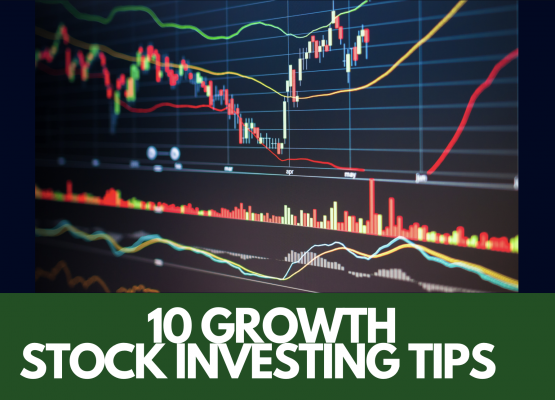When it comes to building wealth, beyond the daily hustle and putting money away in a savings account, there is a powerful, yet often underestimated force that can help you to achieve your goals. This force is known as compound interest, which Albert Einstein himself once coined “the eighth wonder of the world”.
Understanding Compound Interest
Compound interest is when the interest earned on an initial amount of money invested, earns interest itself, thus leading to exponential growth over time. Unlike simple interest, where gains are simply added to the initial principal amount, compound interest multiplies your earnings by continuously reinvesting both the original sum and the accrued interest. Over time, this interest then accumulates more interest, which accumulates even more interest, in a never ending cycle where your money is being constantly reinvested for growth.
This mechanism can not only accelerates the growth of your retirement savings, but can also be used for any other short (less than 10 years) or long term (generally 20 to 30 years or more) investment goals you may have.
The significance of the principal of compound interest when it comes to building wealth, therefore, cannot be emphasized enough, since compound interest is the cornerstone of long-term financial planning, turning modest savings into substantial sums and transforming financial dreams into attainable goals.
Simple Interest vs. Compound Interest
Imagine you’re saving or investing money. With simple interest, your earnings are straightforward: your initial sum earns interest at a fixed rate every year, but only on the original amount. For example, if you invest $1,000 at a 5% annual simple interest rate, you earn $50 every year, regardless of the interest previously earned. A practical way you can think about this, would be if you were constantly withdrawing the interest and spending it, rather than letting it reinvest and grow over time.
Compound interest, on the other hand, is like a snowball rolling downhill, which gathers more snow (interest) as it grows. Here, your initial investment earns interest, and then the total (initial plus interest) earns more interest in the next period, and so on. Thus, your money is being constantly reinvested, so you have the ability to grow your investment portfolio(s) substantially over time.
Interest Upon Interest
So, if you start with $1,000 at a 5% annual compound interest rate, the first year earns you $50 (like simple interest), but the second year you would earn interest on $1,050, not just the original $1,000, which means you have now earned $52.50 in interest. This would theoretically increase each year into perpetuity, and the effect is especially magnified if you are continually adding more money to the equation, in addition to the initial principal amount.
The Rule of 72
The Rule of 72 is a simple formula to estimate the time it takes for an investment to double in value, given a fixed annual rate of return. You divide 72 by the annual rate of return to get the doubling time in years. For example, at a 6% return rate, it would take roughly 12 years for an investment to double (72 divided by 6 equals 12). This rule offers a quick, useful way to gauge the growth potential of investments and highlights the impact of higher returns on investment growth.
Starting early with investing leverages the full power of compound interest, thus significantly impacting the total wealth you can accumulate over time.
Begin as Soon as Possible
If we consider two individuals for example, one of them who invests a lump sum of $10,000 at the age of 25, and other other who invests a lump sum at the age of 35, by the time they reach retirement (let’s assume the age of 60), at a continual 6% interest rate, here’s what happens.
- The individual who invested beginning at 25 years old, ends up with $76,860.87.
- The individual who began investing at 35 years old will end up with $42,918.71.
- Assuming the same interest rate and an additional $500 monthly deposit, the initial $10,000 investment and continually monthly $500 investment amount results in the 25 year old ending up with $745,469.55.
- Meanwhile, the 35 year old investor only ends up with $372,105.78.
This illustrates not just the importance of higher returns, but also the profound impact of giving your investments more time to grow through the power of compounding. Regular, consistent investments, even in smaller amounts, can lead to significant growth over time, underscoring the importance of starting as early as possible. However, if you’re already 35 years old or even older, don’t fret! You still have time, you’ll just want to be more aggressive with how much you invest and save.
Choosing Investment Vehicles
To harness compound interest effectively, choosing the right investment vehicles is key. Retirement accounts including 401(k)s and IRAs offer tax advantages that enhance the power of compounding. Stocks provide growth potential, whereas bonds offer more stability, though with lower returns. Diversifying across these options can balance risk and reward according to your risk tolerance and time horizon.
For long-term goals, a heavier stock allocation might make more sense, while bonds or high-yield savings accounts could be better for shorter-term objectives. Regularly assessing your portfolio’s performance against your financial goals is crucial to ensure it remains aligned with your investment strategy. Another tip is to consider rebalancing your portfolio on a regular basis.
Common Pitfalls
To maximize the benefits of compound interest, it’s important to avoid common pitfalls such as withdrawing funds early, which disrupts the compounding process, and inconsistent investing, which diminishes the potential for growth. Starting late or choosing investments with low growth potential can also significantly impact the compound interest effect. Understanding and avoiding these mistakes can help ensure that your investments have the best chance to grow over time.
Enhancing the benefits of compound interest involves strategies such as reinvesting dividends and choosing investments with higher compounding frequencies. Reinvesting dividends allows your investment to grow faster by increasing the amount that’s compounding. Opting for investments that compound quarterly or monthly, rather than annually, can also amplify growth. These techniques, combined with a consistently disciplined approach when it comes to investing, can significantly increase the rate of return and the overall effectiveness of compound interest in building wealth over time.
Inflation can erode the real value of your savings and the effective return on investments, including those benefiting from compound interest. To mitigate inflation’s impact, consider investments with historically higher returns than inflation rates, such as certain stocks, real estate, or treasury inflation-protected securities. These can offer a hedge against inflation and help preserve the purchasing power of your earnings over time.
In Summary
To begin leveraging compound interest, you could begin by opening a high-yield savings account or an investment account if you haven’t already. Begin with an amount you’re comfortable with and aim to contribute regularly, even if it’s small. Choose investments that match your investment objectives & goals—stocks for growth, bonds for stability, or a mix for diversification. Consider setting up automatic transfers to your investment account to ensure consistent contributions. Finally, educate yourself on the basics of investing and seek financial advice if needed to tailor your strategy to your goals.
Embracing a long-term perspective is essential on the journey towards financial independence. The power of compound interest—which has been hailed by Einstein as the eighth wonder of the world—lies in its ability to exponentially increase your wealth over time, thus making it a cornerstone of any effective investment strategy. By starting early, investing consistently, and wisely choosing your investment vehicles, you can harness this powerful force to build substantial wealth. Patience and discipline in your investment approach will slowly but surely pave your path to financial freedom.




